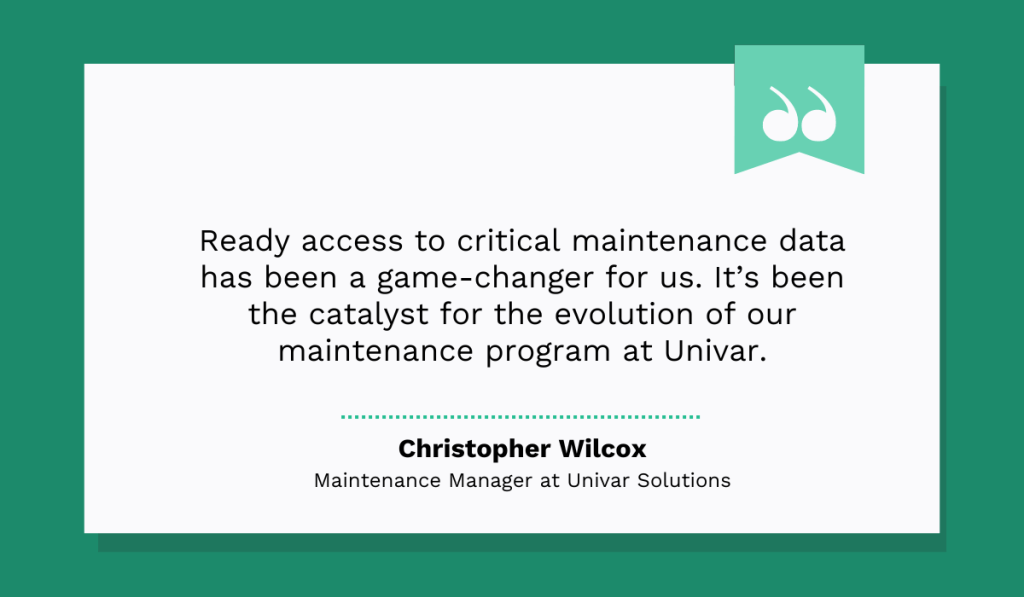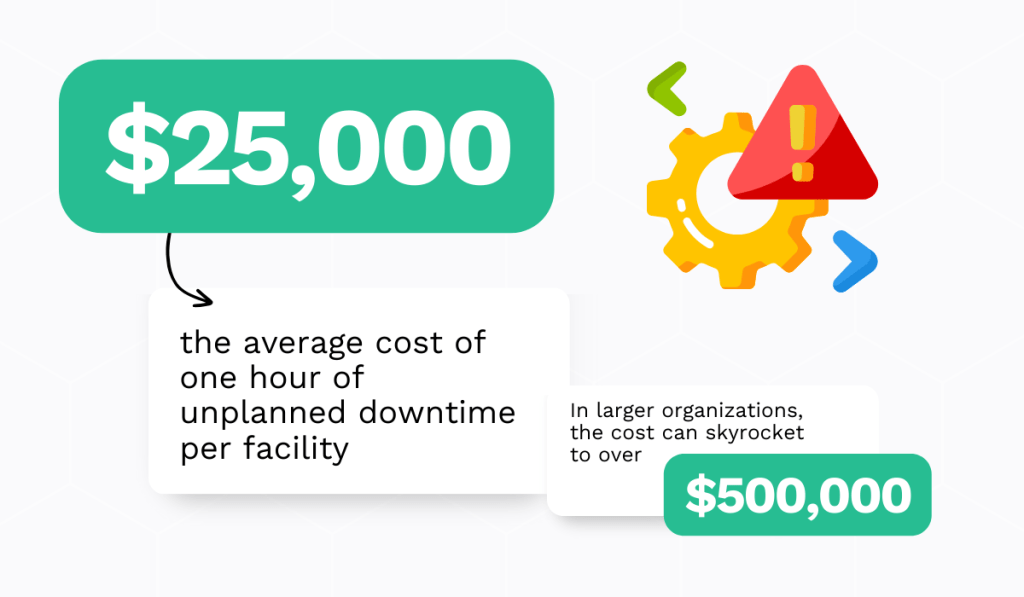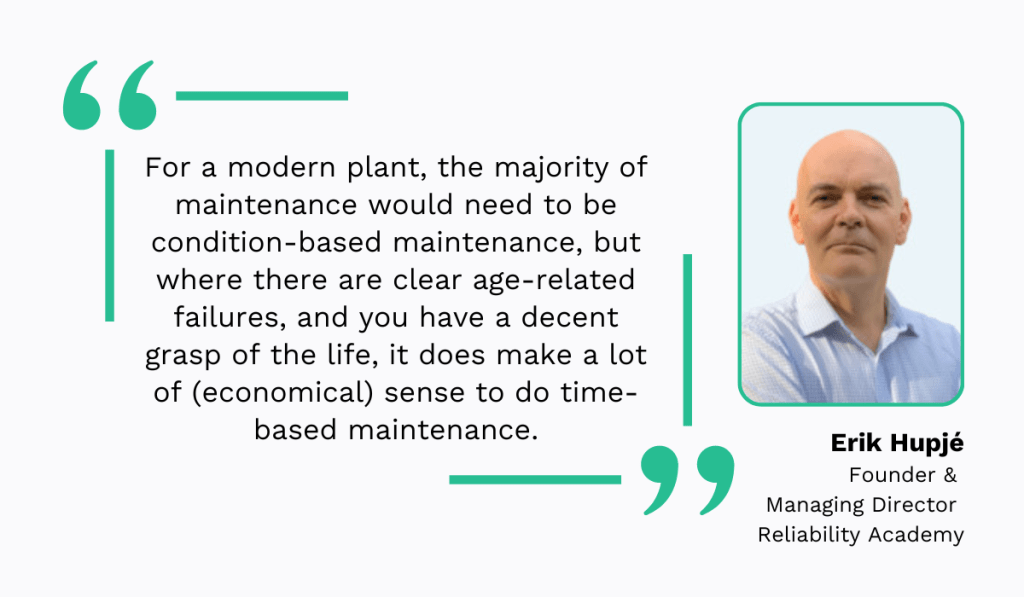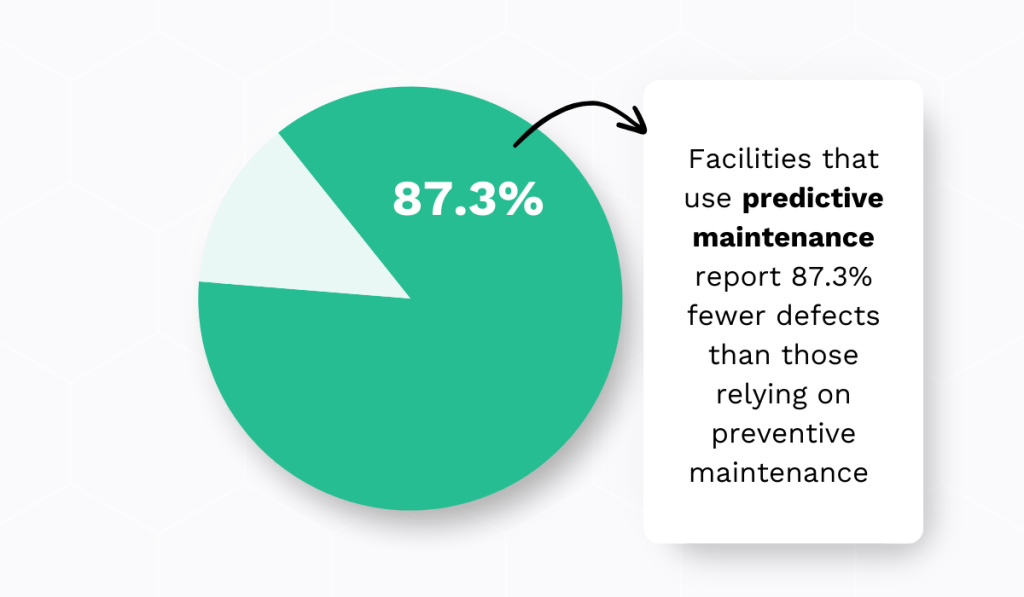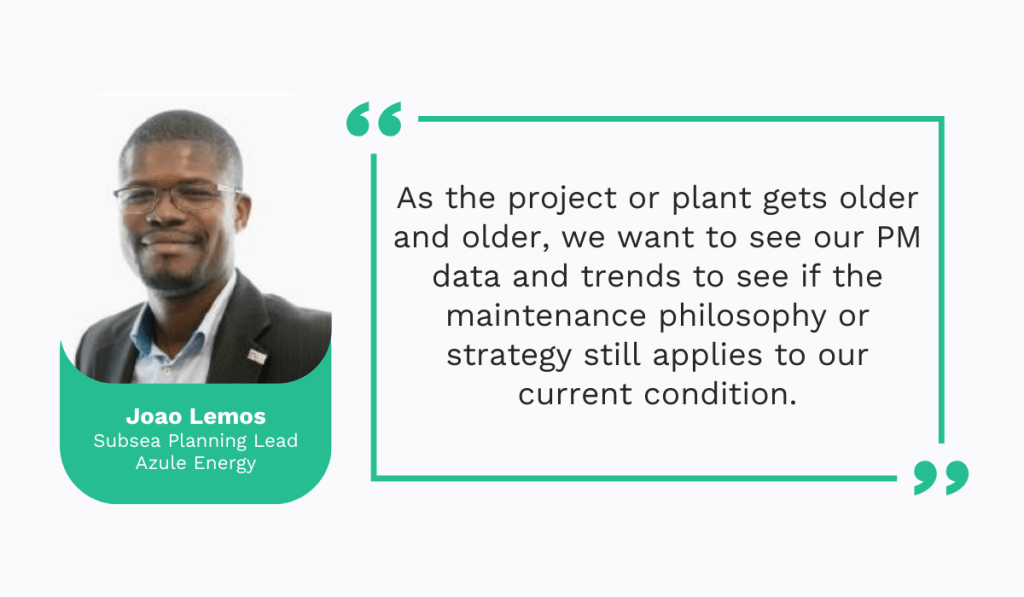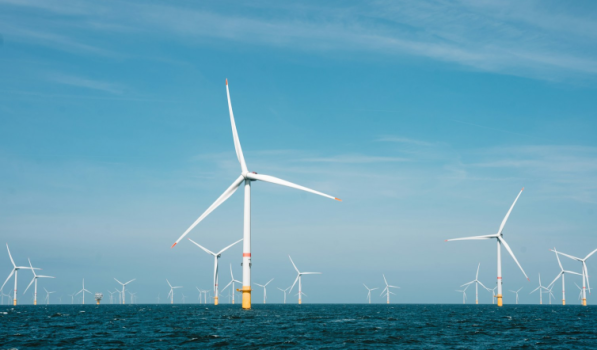Get a Free WorkTrek Demo
Let's show you how WorkTrek can help you optimize your maintenance operation.
Try for freeMaintenance decisions impact many things, from your facility’s efficiency to employee safety and long-term costs.
With that in mind, choosing the right strategy to keep maintenance in check can feel overwhelming.
But if you’re dealing with that, you’re in the right place.
We will walk you through six practical steps to help you make the best decision for your equipment.
By the end, it will be easier to select a strategy that maximizes asset performance while keeping costs under control.
Let’s get started.
1. Gather Information On All of Your Equipment
The first step in choosing the correct maintenance strategy is understanding your equipment inside and out.
After all, you can’t maintain what you don’t fully understand.
So, identify every piece of equipment, tools, and machinery in your facility.
But don’t stop there—take note of each asset’s age, condition, usage patterns, and maintenance history.
All of this will influence your maintenance strategy.
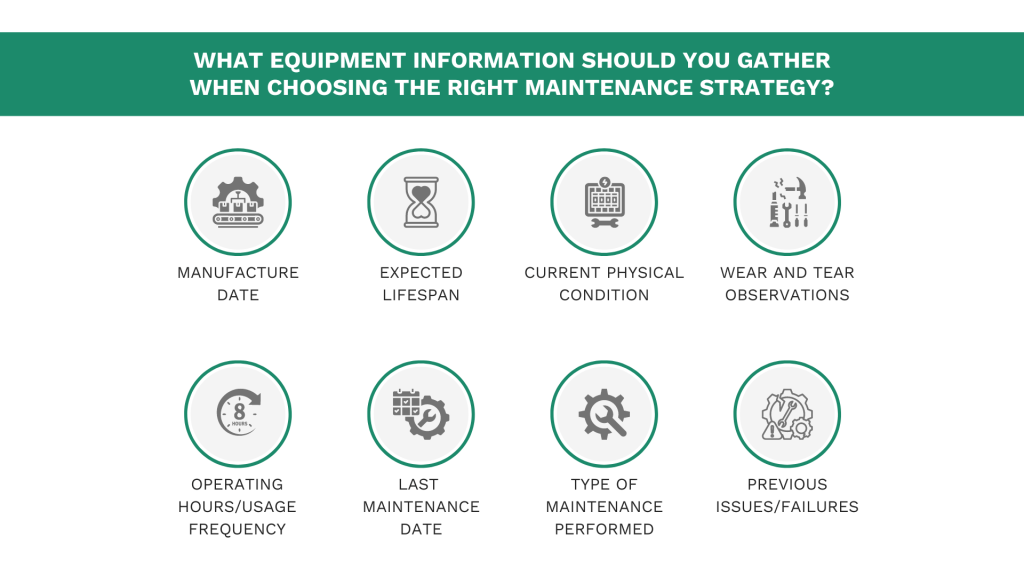
Think of it like this: maintaining equipment that keeps the production line moving isn’t the same as maintaining machinery that’s only used occasionally.
For example, if your entire operation depends on a single conveyor system, its breakdown would bring everything to a halt.
In contrast, a failure in a rarely-used backup generator wouldn’t be as urgent.
Naturally, these two pieces of equipment will need different maintenance strategies.
Also, a new piece of equipment and an old one probably won’t need the same maintenance approach.
But how do you know which assets are the most critical to maintain beyond the obvious ones?
With the help of criticality analysis.
Through this analysis, you evaluate each asset based on the cost of failure—not just in terms of money but also safety risks, production delays, and environmental impact.
With a criticality score, you can rank your equipment by importance and prioritize maintenance accordingly.
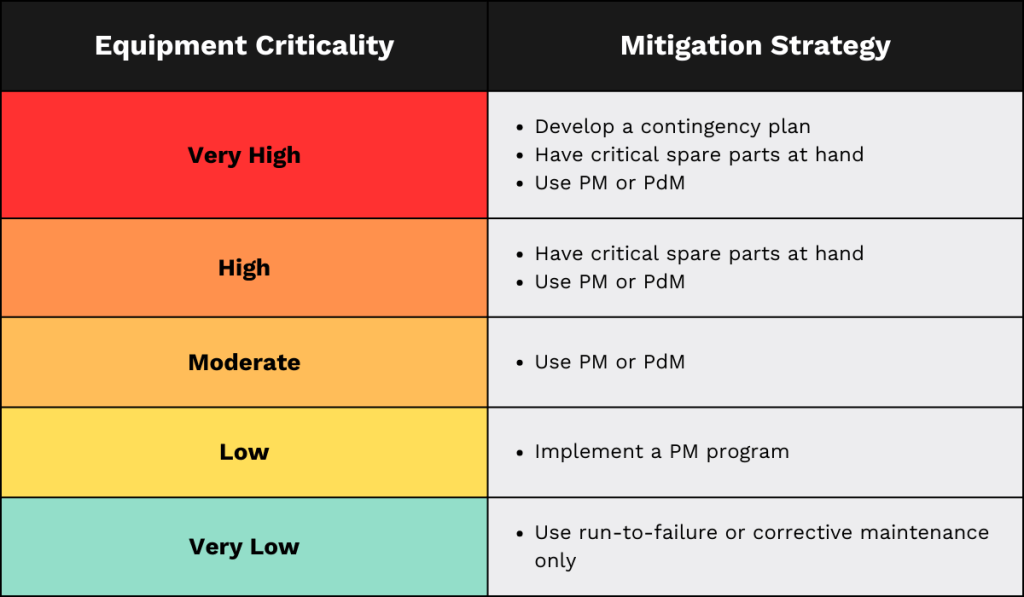
Once you’ve identified your critical assets, ensure everyone is aligned on priorities.
What seems minor at the corporate level could have a huge impact on daily operations.
Jonathan Trout from Reliable Plant captures this well:
On a corporate level, a failure that leads to a loss of $1 million in revenue might be considered minor or moderate, but on an equipment or plant operational level, it might be seen as major.
This difference in perspective is why aligning corporate goals with operational realities is key when planning maintenance.
Ensuring that both corporate and operational teams agree on what’s critical will help you choose a maintenance strategy that balances company-wide goals with day-to-day needs.
Once you’ve gathered all the information and identified your critical equipment, you’re ready for the next step.
2. Evaluate Your Current Maintenance Processes
Now examine how maintenance has been handled.
To choose the right maintenance strategy, you must understand what’s working, where the gaps are, and where improvements are needed.
How can you do that?
Start by collecting and analyzing data on equipment availability, downtime, and the causes of asset failures.
Ask yourself:
- How much time and money are you spending on maintenance?
- Are there areas where downtime is hurting productivity?
The more data you gather, the clearer your insights will be.
Accurate, up-to-date maintenance data is crucial here.
It helps you identify patterns, track performance, and, most importantly, highlight inefficiencies that need fixing.
Christopher Wilcox, Maintenance Manager at Univar Solutions, a global chemical and ingredients distributor, explains how data has played a key role in shaping their maintenance strategy:
So, how do you gather this data?
If you’re using a computerized maintenance management system (CMMS), you’re already a step ahead.
A good CMMS stores valuable maintenance data, giving you a clear overview of your maintenance operations.
For example, if breakdowns are frequent, historical records in your CMMS can help you spot potential errors in work orders or underlying issues in your process.
It uncovers key metrics like mean time between failures (MTBF) and overall equipment effectiveness (OEE), showing how well the equipment performs and where inefficiencies exist.
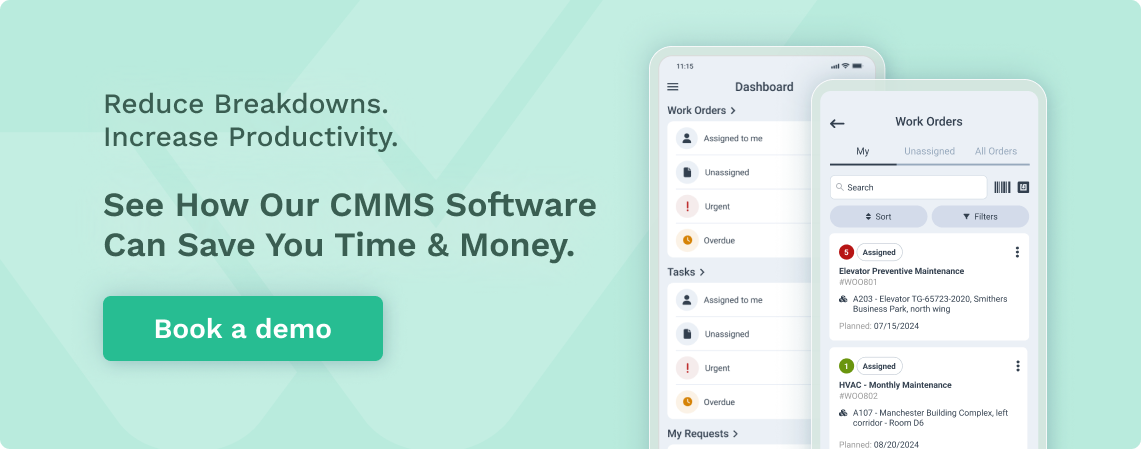
Other metrics include maintenance costs, response times, and failure trends.
For example, with WorkTrek, our CMMS solution, you can quickly generate reports on the cost of work orders to get insight into your overall maintenance expenses.
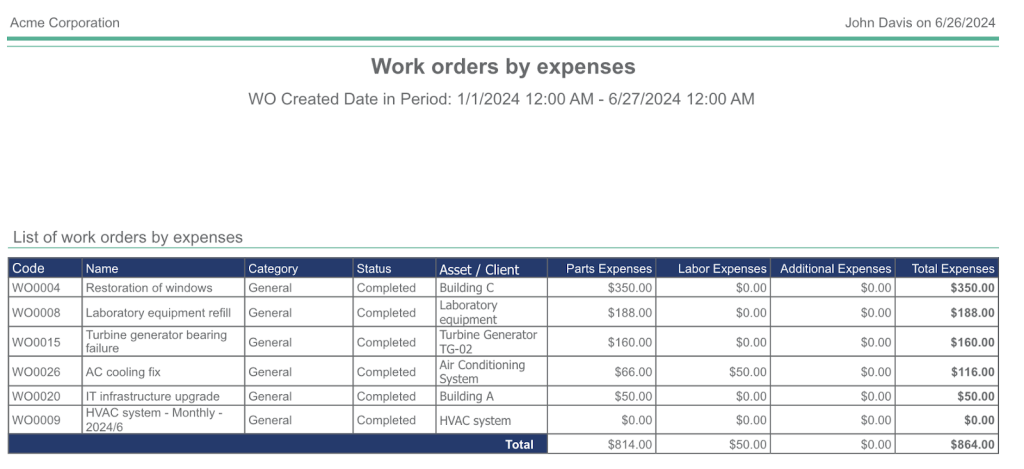
By analyzing this data, you can spot patterns and identify where in your maintenance processes changes need to be made to boost efficiency, reduce costs, or improve safety.
3. Define Your Maintenance Goals
Now that you’ve identified what isn’t working, it’s time to focus on what you want to achieve with your new maintenance strategy.
- Do you want to reduce equipment downtime?
- Cut maintenance costs?
- Extend the lifespan of your assets?
- Or perhaps improve safety and compliance?
The goals you set will guide your decision on which strategy to choose.
For example, if you found that unplanned downtime was a major issue in your facility during the previous step, reducing it should be a top priority.
A recent report on industrial maintenance showed that the average cost of one hour of unplanned downtime is about $25,000 per facility.
In larger organizations, this can skyrocket to over $500,000.
If downtime drains your resources, minimizing it must be a key objective.
On the other hand, if improving compliance is your main goal, you might focus on stricter, more regular inspections and safety protocols.
This ensures your equipment meets regulatory standards. It also means consistently tracking compliance requirements and scheduling timely audits.
Or, perhaps, you’ve noticed a pattern where assets aren’t fully utilized, yet you’re still performing scheduled maintenance and replacing parts in good condition.
In this case, your goal could be to reduce maintenance costs by choosing a strategy that better aligns with equipment needs.
Ultimately, this is the moment to set clear, measurable goals.
They will shape your decision on the best strategy moving forward.
But first, you need to know which strategies are available.
4. Compare Different Maintenance Methods
Once you’ve completed all the prep work, it’s time to explore and compare the different types of maintenance.
Each one comes with its own set of pros and cons, so the goal is to find the one that best suits your facility, equipment, and goals.
Here’s a simple comparison of key maintenance strategies:
| Strategy | Description | Pros | Cons | Best for |
| Run-to-failure | Equipment is fixed or replaced only after it breaks | Low upfront cost, minimal planning required | High risk of downtime, costly emergency repairs, safety risks | Non-critical equipment where downtime isn’t a major issue |
| Preventive maintenance (time/usage-based) | Scheduling regular maintenance at fixed intervals or after a set usage period | Reduces unexpected breakdowns, improves equipment reliability | Can lead to over-maintenance, labor-intensive | Equipment with predictable wear patterns or high operational importance |
| Condition-based maintenance | Monitors equipment conditions (vibration, oil quality) to schedule maintenance only when needed | Avoids unnecessary maintenance, detects early issues | Requires monitoring systems, training, and expertise | Assets where frequent failures impact production, but conditions can be easily monitored |
| Predictive maintenance | Uses real-time data and advanced analytics to predict failures before they happen | Minimizes downtime, extends equipment life, reduces unnecessary maintenance | High initial investment in sensors, data systems, and skilled staff | Critical equipment where downtime is costly, large facilities with significant resources |
| Reliability-centered maintenance (RCM) | Combines different strategies based on equipment criticality and reliability analysis | Optimizes maintenance for each asset, reduces risks | Complex to implement, requires ongoing data collection and skilled personnel | Facilities with diverse equipment, where one strategy won’t fit all |
When comparing these, it’s also important to assess the costs associated with each.
In general, the more monitoring and data-intensive a strategy is, the higher the cost.
However, these costs are often offset by the savings from reduced downtime, extended asset life, and fewer emergency repairs.
So, in this step, thoroughly compare the strategies and weigh their pros, cons, and costs to determine the best fit.
5. Choose the Right One For You
Now that you know your goals and understand the different maintenance strategies, it’s time to choose the one (or a combination) that fits your facility best.
But before you decide, consider a few key factors:
- the condition of your equipment,
- your staff’s skills,
- and your budget.
Now, you should have these basics covered, so it’s all about matching your needs with the right approach.
For your non-critical assets, reactive maintenance might be the best option.
However, you’ll need a more proactive approach—like preventive maintenance for critical assets.
If you have a machine that powers your production line, you wouldn’t want to wait for it to fail.
And in some industries, preventive maintenance is non-negotiable.
Take a food processing plant, for instance—unexpected refrigeration breakdowns would compromise product safety.
Scheduling preventive maintenance for these critical systems ensures small issues, like a failing fan, don’t turn into larger, more expensive problems.
The great news?
Tools like WorkTrek make scheduling preventive maintenance simple.
In just a few clicks, you can set preventive maintenance inspections and repairs for your assets, like this turbine generator:
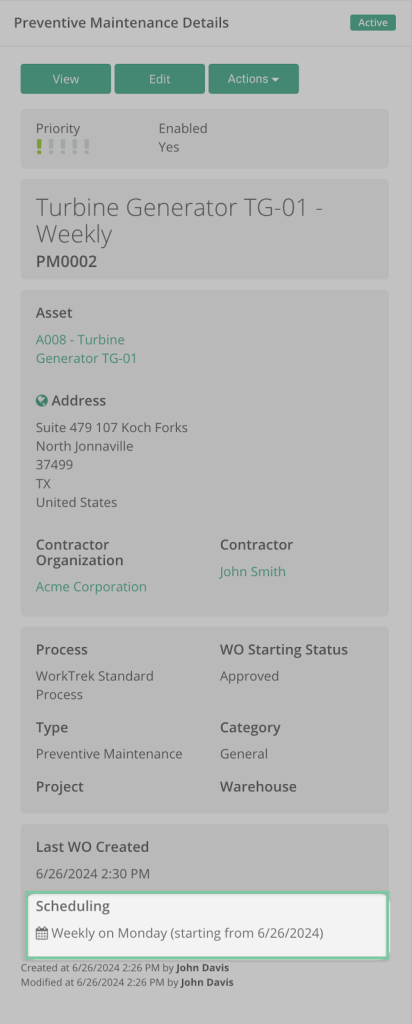
This method allows you to catch minor issues before they escalate and make your turbine generator unusable.
If you want to be more data-driven, consider condition-based maintenance.
This strategy uses real-time monitoring to track the health of your equipment, ensuring maintenance is only performed when necessary.
According to Erik Hupjé, founder of the Reliability Academy, condition-based maintenance should be the primary strategy in modern plants.

However, you can mix it with time-based preventive maintenance where it makes sense:
For instance, if you manage a bunch of air compressors that tend to wear out after a set number of hours, time-based maintenance is perfect for servicing them at regular intervals.
This way, you stay cost-effective while preventing unexpected breakdowns.
But if you don’t have accurate data, condition-based maintenance would be a better fit because it allows you to monitor the equipment’s actual condition and only service it when needed.
If your main goal is to eliminate defects, predictive maintenance might be the way to go.
Research shows that facilities using predictive maintenance experience 87.3% fewer defects than those relying on preventive maintenance.
This approach uses real-time sensor data and predictive analyses to calculate when equipment will fail, letting you perform maintenance before it happens.
At the end of the day, choosing the right strategy is about aligning your maintenance goals with your facility’s specific needs.
Whether you opt for a single strategy or mix a few, ensure it fits your budget, equipment, and team capabilities.
That way, you’ll get the best performance out of your assets while keeping costs in check.
6. Continuously Improve Your Maintenance Strategy
Once the strategy is in place, your job isn’t over.
You’ll need to regularly review and adjust it to ensure it delivers the desired results.
As equipment ages and operational demands evolve, this step becomes even more critical.
Joao Lemos, a maintenance technician and planner with more than 20 years of experience, emphasizes this:
So, review the chosen maintenance strategy after a while and ask yourself:
- Is downtime decreasing?
- Are maintenance costs lower?
- Are repairs more efficient?
If the answers aren’t affirmative, adjust your approach.
For instance, if predictive maintenance isn’t preventing breakdowns, figure out why.
It could be due to inaccurate sensor data or aging equipment, and you might need to upgrade your technology.
It’s also important to communicate with your maintenance team.
They know the equipment best and can provide valuable feedback on whether the strategy works.
Persistent issues or inefficiencies reported by technicians are clear signs that you must re-evaluate your process.
Therefore, know that choosing the maintenance strategy isn’t a set-and-forget decision.
You must continuously monitor, communicate, and adjust your strategy to keep your facility running smoothly and efficiently.
Conclusion
As you’ve seen, choosing the right maintenance strategy requires careful planning, but it’s well worth the effort.
By gathering the right data, setting clear goals, and comparing strategies, you can confidently select a strategy—or a combination of them—that fits your facility’s unique needs and budget.
Remember that this shouldn’t be a set-it-and-forget-it thing.
Be ready to adjust your strategy to your evolving needs, so you’re always using the most effective methods.
Good luck!





